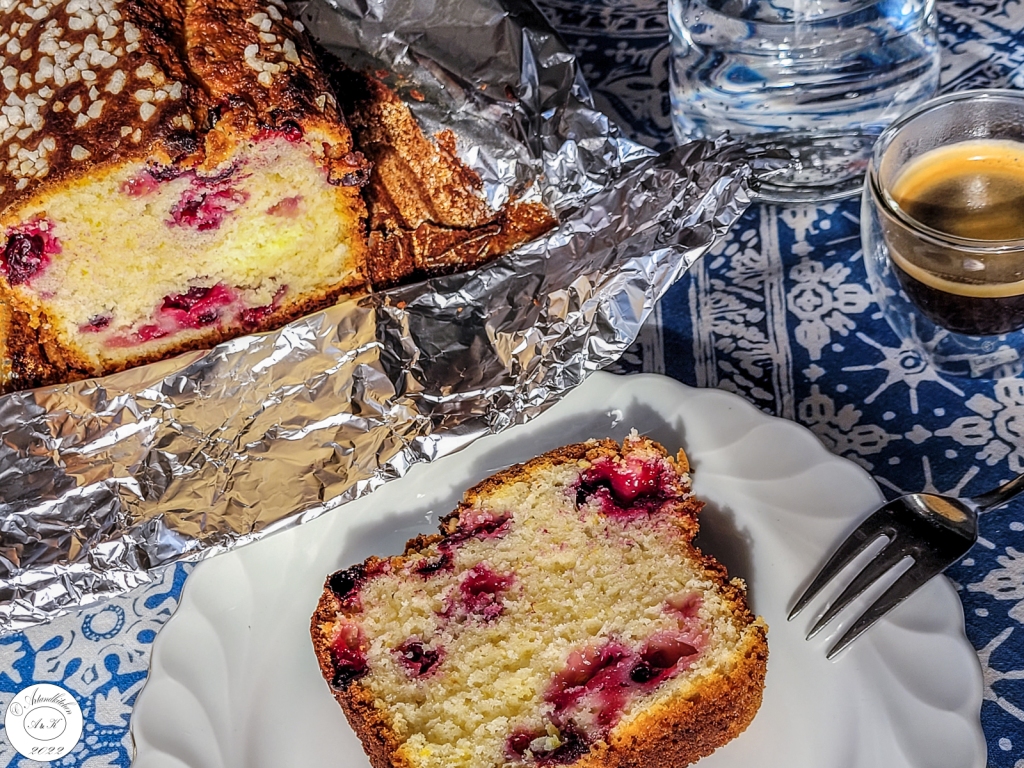One of our absolute beloved, fresh and spongy super quick cake!
The source of this recipe is a popular recipe which we got in Spain and we adapted it reducing the oil and the sugar only for personal taste. We use Greek plain yogurt + fresh lemon instead of yogurt with lemon taste. In Spain this cake is also called “bizcocho 1 2 3 “.
We prepare if you are traveling into holidays apartments (yes, we I carried the empty tin with us) for a fast breakfast and a snack for our road trips.
For the easiest version you may use the container of your yogurt as the measure of 1 cup.
See also the Spanish version on youtube: https://www.youtube.com/watch?v=pgdaD_EJX-E&ab_channel=Elrinc%C3%B3ndelpancasero
The combination of cassis and lemon gives to this cake a very strong and refreshing flavour.
We tried also these great variations:
- Limes instead of lemons
- Black berries, blueberries or “josta berries” instead of cassis
- Skip the berries and convert this cake into a lemon cake
Black Currants and Lemon Cake
Ingredients

Batter:
- 1 cup yogurt (any yogurt but for us Greek plain yogurt is the best)
- ½ cup oil (original recipe: 1 cup)
- 1 ½ cups sugar (original recipe 2 cups)
- 3 (if you use the size of the container of the yogurt instead of “cup”) or 4 eggs (if using the official “cup”)
- 1 lemon, zest grated
- 1 lemon, juice
- 3 cups flour
- 2 teaspoons baking powder (1 envelope)
- 1 teaspoon vanilla (1 envelope)
Fruits:
- 1 cup black currents (cassis) or other berries
Topping (optional)
- Sugar pearls
Preparation:
- Preheat the oven to 180°C/350°F and line you mold (about 30 cm of length) with baking or aluminum foil.
- In a big bowl combine all the ingredients for the batter.
- Fold under the berries.
- Pour the dough into your prepared mold and add the topping.
- Cook for 50-60 minutes at 180°C/350°F or until done (toothpick test)
- Let cool down and serve.








 Salmorejo is a fresh, thick, pink-orange soup consisting of tomatoes, bread and garlic witch is topped with hard boiled eggs and diced jamon serrano (serrano ham). A few days ago I posted the original recipe; now it’s time to post my super quick version for the days you may not have time to wait, but you wish this something fresh and tasty. In these days we try to avoid going out (Coronavirus lockout) and going shopping, we use what we have in the pantry and we adapt the recipes to the ingredients we have on hand.
Salmorejo is a fresh, thick, pink-orange soup consisting of tomatoes, bread and garlic witch is topped with hard boiled eggs and diced jamon serrano (serrano ham). A few days ago I posted the original recipe; now it’s time to post my super quick version for the days you may not have time to wait, but you wish this something fresh and tasty. In these days we try to avoid going out (Coronavirus lockout) and going shopping, we use what we have in the pantry and we adapt the recipes to the ingredients we have on hand.

 Salmorejo is a fresh, thick, pink-orange soup consisting of tomatoes, bread and garlic witch is topped with hard boiled eggs and diced jamon serrano (serrano ham). We enjoyed this for the first time in 2014 (see photos!) in the house of our friends in Cordoba and we really loved it. For the preparation we used the light white bread witch, combined with the red of the tomatoes, gave to the dish this nice orange-pink color. The ham was already prepared diced and sold as jamon serrano for salmorejo, but you may simply dice some jamon serrano. Ana used quail eggs, but, as these are mostly not available, normal commercial eggs are suitable for this recipe.
Salmorejo is a fresh, thick, pink-orange soup consisting of tomatoes, bread and garlic witch is topped with hard boiled eggs and diced jamon serrano (serrano ham). We enjoyed this for the first time in 2014 (see photos!) in the house of our friends in Cordoba and we really loved it. For the preparation we used the light white bread witch, combined with the red of the tomatoes, gave to the dish this nice orange-pink color. The ham was already prepared diced and sold as jamon serrano for salmorejo, but you may simply dice some jamon serrano. Ana used quail eggs, but, as these are mostly not available, normal commercial eggs are suitable for this recipe.




 ou know quinces, if not, I wish you get some and try to prepare this divine preparation which can be prepared in advance and which can be part of menu in both sweet and savory winter dishes in the coming festive days.
ou know quinces, if not, I wish you get some and try to prepare this divine preparation which can be prepared in advance and which can be part of menu in both sweet and savory winter dishes in the coming festive days.


